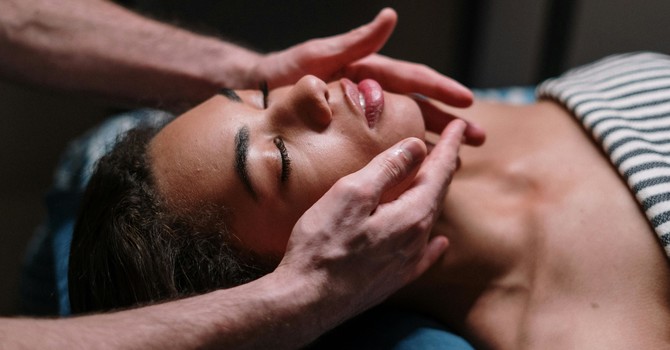
Breast cancer treatments, such as surgery and radiation, can significantly improve survival rates and outcomes for many individuals. However, they often come with a range of side effects that can impact the body in unexpected ways. One such complication is axillary webbing, a condition that can develop after surgery involving the lymph nodes, particularly after a lymph node dissection or axillary radiation therapy. Axillary webbing, also known as "cording," causes tight, painful bands of tissue to form under the skin of the arm, making it difficult to move and perform everyday tasks.
Fortunately, physical therapy plays a crucial role in managing and alleviating the discomfort caused by axillary webbing. In this blog, we’ll explore what axillary webbing is, how physical therapy can help, and why early intervention is essential for optimal recovery.
What Is Axillary Webbing (Cording)?
Axillary webbing occurs when the lymphatic system is disrupted, often as a result of surgery to remove lymph nodes in the armpit (axilla) or radiation therapy to the breast area. After these treatments, scar tissue can form in the area around the axilla, leading to the development of tight, rope-like bands under the skin of the upper arm and chest. These bands may be visible or palpable and often cause discomfort or pain when the arm is moved.
The bands of tissue that form with axillary webbing can restrict range of motion, leading to limited movement in the shoulder, arm, or hand. This can interfere with daily activities, such as lifting, reaching, dressing, or even performing basic tasks like brushing your hair.
What Causes Axillary Webbing?
Axillary webbing occurs due to changes in the lymphatic system following breast cancer treatments, particularly:
-
Lymph Node Dissection: When lymph nodes are removed from the underarm area during breast cancer surgery, the lymphatic system is disrupted. This can cause scar tissue and fibrosis to form, resulting in the tight, painful bands characteristic of axillary webbing.
-
Radiation Therapy: Radiation treatment can also lead to fibrosis or thickening of tissues in the affected area, contributing to the formation of webbing and restricted mobility.
While the exact cause of axillary webbing is not fully understood, it is believed to be related to how the body heals after these treatments and how the lymphatic system responds to disruption.
How Physical Therapy Helps with Axillary Webbing
Physical therapy is one of the most effective ways to address axillary webbing. Through specific exercises, manual therapy, and stretching techniques, physical therapists can help reduce pain, improve mobility, and promote healing. Here's how physical therapy can make a difference:
1. Stretching and Mobility Exercises
One of the most important components of physical therapy for axillary webbing is gentle stretching and mobility exercises. A physical therapist will guide you through specific movements designed to elongate the muscles, fascia, and connective tissues in the affected area. These exercises aim to improve the range of motion in the shoulder, arm, and hand, helping you regain the ability to perform daily tasks.
Common exercises may include:
- Shoulder stretches to improve arm mobility
- Chest and arm stretches to alleviate tension around the axilla
- Hand and wrist stretches to restore function and flexibility
- Neural Flossing exercises to improve nerve gliding
Regular stretching can gradually release the tightness associated with axillary webbing, improving your comfort and movement.
2. Manual Therapy
Manual therapy is a hands-on approach used by physical therapists to manipulate and mobilize the tissues around the affected area. This therapy can help release the restrictive bands of tissue caused by axillary webbing. Techniques may include:
- Myofascial release: A method to target and release tightness in the fascia (the connective tissue surrounding muscles and organs).
- Scar tissue mobilization: Using gentle pressure to break down or soften scar tissue, improving flexibility and function in the affected area.
- Soft tissue massage: To increase blood circulation, reduce muscle tightness, and promote relaxation.
These techniques can help break up the tight bands, ease pain, and improve the range of motion in the arm.
3. Strengthening Exercises
As axillary webbing may lead to muscle weakness or imbalance in the upper body, strengthening exercises are an important part of the rehabilitation process. Strengthening the shoulder, arm, and chest muscles can help restore normal movement patterns, prevent further muscle imbalances, and support the affected area during functional movements.
Some strengthening exercises may include:
- Isometric shoulder exercises
- Resistance band exercises to build strength without placing too much strain on the tissues
- Scapular strengthening to support shoulder function and improve posture
4. Improving Posture
Following breast cancer treatment, changes in posture can occur due to pain, stiffness, and compensatory movement patterns. Physical therapy can help correct posture by addressing muscle imbalances and providing exercises that strengthen postural muscles. Maintaining good posture can alleviate pressure on the affected arm, improving overall comfort and mobility.
5. Education and Self-Management
Education is a key part of physical therapy for axillary webbing. Your therapist will provide guidance on how to manage symptoms on your own, such as:
- Correct body mechanics when lifting or reaching
- Breathing techniques to relax the muscles and prevent tension
- Self-massage techniques to reduce discomfort and improve circulation
By learning how to manage symptoms at home, you can play an active role in your recovery and prevent the recurrence of webbing.
The Importance of Early Intervention
Early intervention is crucial when it comes to treating axillary webbing. The sooner physical therapy begins, the more effective it can be in preventing further stiffness, improving range of motion, and reducing pain. If you notice any signs of axillary webbing, such as pain, tightness, or difficulty moving your arm after breast cancer surgery or radiation, it's essential to speak with your healthcare provider about starting physical therapy.
In some cases, axillary webbing can improve significantly with a few weeks of physical therapy, while others may require a more extended rehabilitation program. Regardless of the timeline, addressing the issue early can prevent it from becoming a chronic problem.
Conclusion
Physical therapy plays a vital role in the recovery process for individuals dealing with axillary webbing after breast cancer treatment. By incorporating stretching, manual therapy, strengthening exercises, and patient education, physical therapy can help alleviate discomfort, improve mobility, and restore quality of life. If you're experiencing symptoms of axillary webbing, don't hesitate to reach out to a physical therapist who specializes in cancer rehabilitation. With early intervention and dedicated care, you can regain the movement and independence you deserve.
Our physical therapists are some of the only in Northern Nevada with extensive experience with axillary webbing/breast cancer recovery. We would love to help you get back to life after cancer! Schedule now!
Dr. Nina Routon
Contact Me


